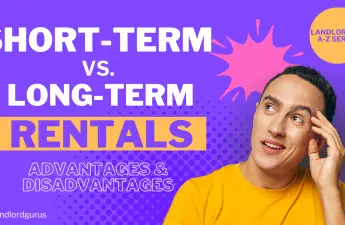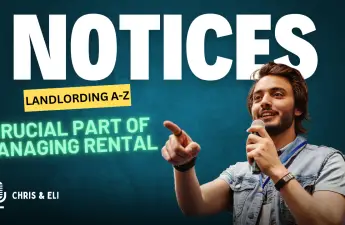In our last episode, we talked about using a maintenance checklist to manage routine repair and maintenance tasks that will keep your property running smoothly and efficiently. Now we’re talking about how to actually get that work done. Below is a brief rundown. See the complete episode for more information.
![]() Also Read: Companion Guide: Rental Property Maintenance Checklist for Landlords
Also Read: Companion Guide: Rental Property Maintenance Checklist for Landlords
First, we believe you should know what repair and maintenance work you should not do yourself, depending on your experience and expertise. Essentially these are jobs where failure carries high potential consequences for your building and/or your tenants. Some examples include:
- Electrical
- Roofing
- Asbestos removal
- Plumbing, especially water supply
Additionally, there are jobs that are dangerous, such as roof or gutter cleaning. You may want to find a vendor who does those professionally and is equipped to manage the risks.
Finding Vendors
Once you’ve decided it’s better to find a licensed professional to complete a task, here are some ways you can go about finding one:
- Word of mouth
- RHA/Landlord organization directory
- Neighborhood social media (Nextdoor, Facebook groups)
- Online directory such as Angie’s List, Home Advisor, etc.
- Property management software: some come with ability to find and source vendors from their platform. Also may have premium subscription where they manage maintenance requests and outreach to vendors on your behalf. Ie RentRedi / Latchel partnership
![]() Also Read: How Do You Find Reliable Handymen and Contractors? – Video Extra
Also Read: How Do You Find Reliable Handymen and Contractors? – Video Extra
Communication, Coordination, and Tracking
You can stick with email or text communications, however it’s easier to coordinate work on a platform that consolidates messages between all parties, and that can host any related photos and video.
There are a variety of property management software products that have communications and/or maintenance portals. Tenants can submit a ticket and the landlord gets notified. Photos/video can be uploaded. The best software also has ability to loop in vendors so both landlord and tenant can track progress and communicate directly with each other.
![]() Also Read: Manage Maintenance on Rental Property using Property Management Software
Also Read: Manage Maintenance on Rental Property using Property Management Software
As mentioned earlier, some of them like RentRedi or Hemlane offer premium level of subscription where they handle all this for you. No more late night phone calls!
Giving Proper Notice
Most jurisdictions have some requirements on how much notice you must give to the tenant before the landlord can enter to perform inspections or provide maintenance.
For example, in Seattle landlords are required to:
- Give renters at least two days’ written notice to enter to make repairs or improvements, supply services, or to inspect
- Give renters at least one days’ notice to enter to show the home to prospective tenants or buyers
- Include the purpose and time of the proposed entry, a phone number, and name of a person who the renter can call to reschedule on the written notices
- In cases of true emergency landlords have the right to enter without standard notice. (Make sure it’s TRULY an EMERGENCY! IE there is imminent or ongoing risk to the property and/or tenants.)
Tenants must grant reasonable access to the property owner and manager.
Pro-tip: Communicating through property management software and looping in the vendor makes it easier for coordinating entry — either for times the tenant will be able to let the vendor in, if they want to be home, or allowing the landlord to enter if the tenant will not be available. If it is an urgent repair, tenants are usually (but not always) willing to let someone in earlier than the two days notice.
Routine Inspections
In the course of a tenant’s occupancy, it is wise to schedule regular maintenance inspections. Once per year is a good rule of thumb. However, what happens when you inspect and find the tenant has not lived up to their end of the lease agreement when it comes to keeping the property safe and habitable? For example, if they have created a hazardous environment, either from pests or fire hazard?
Comply or Vacate
This has happened to Chris, as discussed in an earlier Landlord Gurus video. In cases like this, we recommend issuing a comply or vacate notice. This gives the resident a set period of time (10-days) to comply with the terms of the lease and return the property to a safe and habitable space. If they fail to comply, you have grounds to evict. Check your local laws and/or lawyer for specifics.
Takeaway
To help you stay on top of routine maintenance and inspections, use a checklist. Be smart about what to outsource and find vendors you can trust. Always ensure that you are communicating clearly and concisely with everyone involved — we suggest using property management software. Follow the rules, by giving tenants the appropriate notice. And don’t forget routine inspections!

Landlording A-Z Series:
Our Landlording A-Z series will walk you through each of the stages, tasks, and issues involved in rental real estate investing. In our next installment, we’ll discuss collecting rent.




